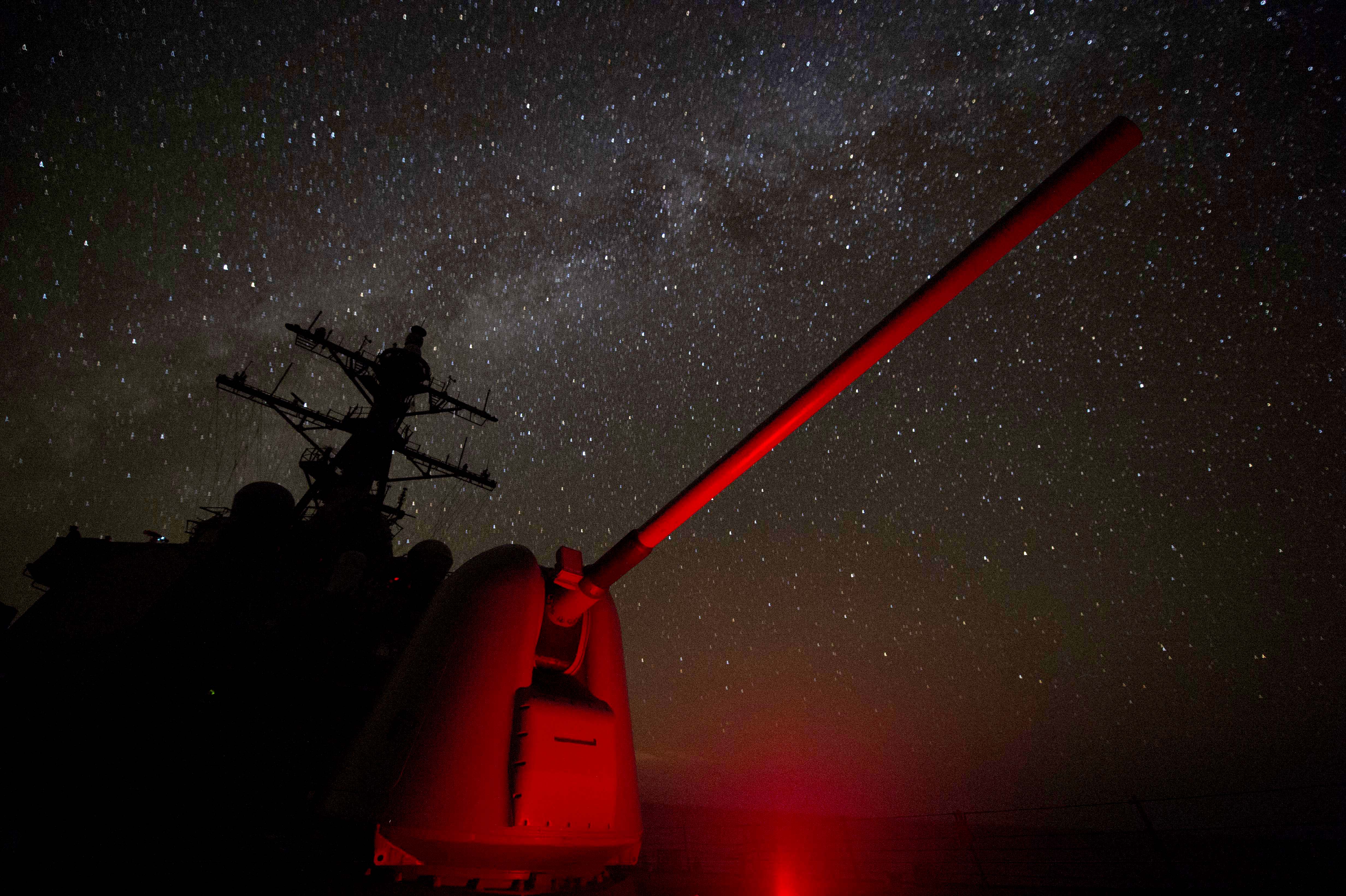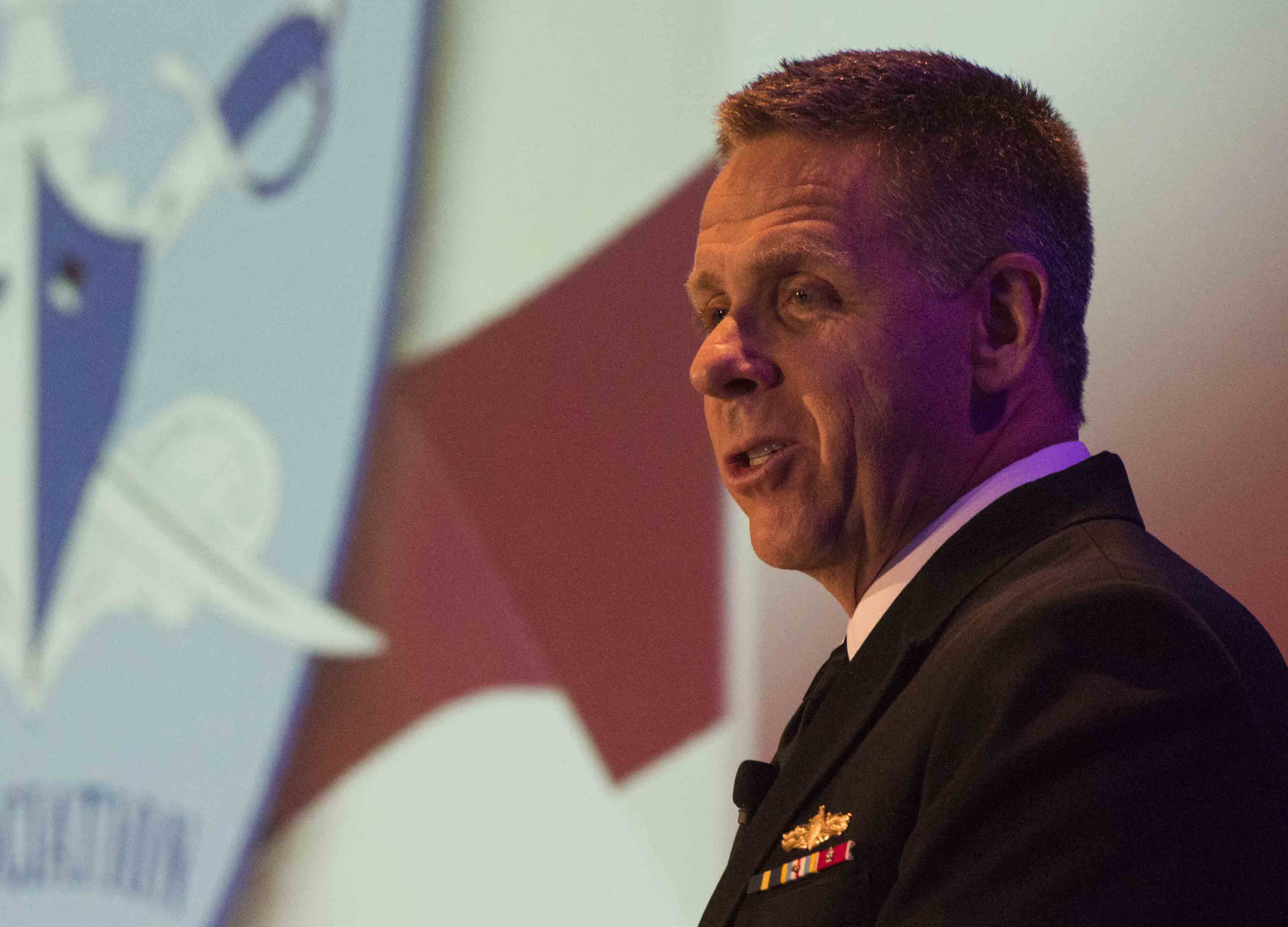
This post has been updated to correct that Adm. Phil Davidson was speaking about destroyers when discussing the elimination of sonar shacks onboard ships.
HAMPTON, VA. — The Navy took risk in many of its destroyer fleet’s mission sets during a period of uncontested operations at sea, and U.S. Fleet Forces Command has now been tasked with regaining sea control and all-domain access.
Fleet Forces Commander Adm. Phil Davidson said Tuesday at the American Society of Naval Engineers’ annual Fleet Maintenance and Modernization Symposium that strategy documents around the 2006 timeframe called for ships disaggregating and operating independently in an uncontested maritime environment. As a result, “we fundamentally decided to take risk on one of our main missions (sea control), and that risk was taken in order to source new missions.”
The Navy reduced destroyer crew sizes and instead devoted personnel to expand the explosive ordnance disposal (EOD) and Seabees communities, take on new riverine and harbor patrol missions, and create a cyber force.
In doing so, “we took risk in (anti-submarine warfare), we emptied the sonar shacks and we made boarding teams out of those guys,” he said of the destroyer fleet.
“We took risk in (electromagnetic warfare), we took risk in (electronic warfare support measures). We took risk in sea control, gave up Harpoon (anti-ship missile) among some other things. That was all to produce that force that we needed over the last 15 years. Now that’s all changed. Here we are; we have the stuff that we have, we have the ideas of what we’re going to do with that stuff going forward, and we’re going to have to invest in order to make this work.”
Davidson said he was tasked by the chief of naval operations to “enhance power at and from the sea” and undo some of the risk taken a decade ago. The admiral is still in talks with type commanders and numbered fleet commanders about how to design a fleet that can maintain sea control in any environment against any adversary, but some things are already clear. Recent concepts such as the submarine community’s Undersea Domain Operating Concept, the surface community’s Distributed Lethality and Fleet Forces’ Electromagnetic Maneuver Warfare all “speak to the power of the fleet as opposed to the platform” and point to a “distributed fleet, highly integrated, that is capable of this multi-spectral maneuver that is merging the physical, the communications, the cyber, the networks, the space maneuver in order to make that fleet operable with all-domain access, make it operable in contested and denied environments of all kinds.”
Part of shifting to this operating concept is investing in the networks, the command and control systems, the sensors and the cyber hardening needed to share intelligence and targeting data across platforms. The first deployment of the Naval Integrated Fire Control-Counter Air (NIFC-CA) network on the Theodore Roosevelt Carrier Strike Group last year proved the technology is moving in the right direction.
But the people – from the numbered fleet commanders planning major operations down to the individual sailor at sea – will have to be trained for operations where a ship may rely on assets over the horizon to complete its mission.
Davidson told USNI News during a question and answer session that two main efforts are underway to train the fleet for these distributed but tightly integrated operations.
First, Maritime Operations Centers at each of the numbered fleets test and certify the planning abilities of the fleet commanders’ staffs, and a “MOC standardization” effort has been underway for a couple years to steer that training towards distributed but integrated fleet operations as well as a more sophisticated threat environment.
“The numbered fleet commanders have an obligation as well, and that is to understand their … operational approach, the tactical manifestation of the adversaries, the physical geography, the multi-spectral environment that they’re operating in – and to make their exercise programs serve their needs to build those skills as well,” Davidson said.

On a tactical level, sailors are primarily trained during pre-deployment workups, and in particular the advanced Composite Training Unit Exercise.
“We’ve made a number of changes to that COMPTUEX series over the last two years,” Davidson said.
“We are operating in a much higher threat-simulated environment already, we have restored live-firing exercises, missile-firing exercises on the East Coast of the United States. … and we are putting in place for the ships, for the surface force, a SWATT, Surface Warfare Advanced Tactical Training, for the destroyer squadron commanders to take their ships to sea and exercise in their group tactics as opposed to the individual ship tactics which are generated during basic phase, to help those units then transition to the advanced phase in the COMPTUEX. More importantly, we’re adding threats, we’re adding blue submarines and orange submarines, we’re adding P-8s to the COMPTUEX because all those task force commanders see the advantage of integration and they want to get involved in these COMPTUEXs to enhance that training.”
To help guide these training opportunities, Fleet Forces has focused a fleet experimentation fund on distributed operations to help understand how they can operate with that concept today and what gaps need to be addressed.





